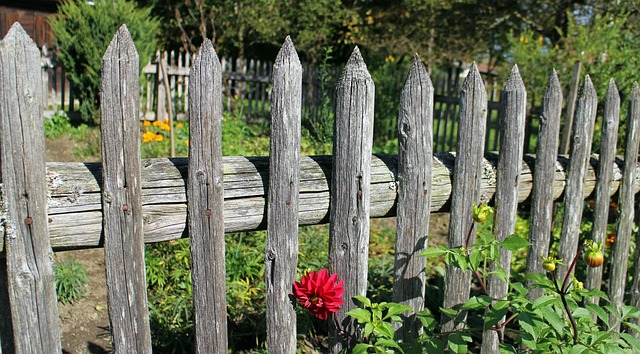Privacy fences have become an increasingly popular choice for homeowners in New Bedford, MA, offering both aesthetic appeal and practical benefits. This comprehensive guide explores the process of installing a privacy fence, from understanding local regulations to selecting materials and styles that suit your preferences and property. By following these steps, you’ll ensure a secure and visually pleasing addition to your outdoor space.
- Understanding Privacy Fences in New Bedford
- Benefits of Installing a Privacy Fence
- Choosing the Right Material and Style
- Local Regulations for Fence Installation
- Step-by-Step Guide to Installation Process
- Maintaining Your New Privacy Fence
Understanding Privacy Fences in New Bedford
Privacy fences are more than just a physical barrier; they are a symbol of security and personal space. In New Bedford, MA, where homes often blend into one another in close-knit neighborhoods, a privacy fence can be a game-changer for homeowners seeking to protect their yards from prying eyes. These fences come in various styles, materials, and heights, each offering different levels of seclusion and security.
Whether you’re looking for a classic wood fence that adds warmth to your property or a sleek, modern metal design that exudes strength, understanding the options is key. In New Bedford, it’s essential to consider local regulations regarding fence installation, especially when it comes to height restrictions and permit requirements. With proper planning, a privacy fence can enhance outdoor living spaces, foster a sense of peace and tranquility, and ensure your yard remains a private sanctuary.
Benefits of Installing a Privacy Fence
Privacy fences offer numerous advantages for homeowners in New Bedford, MA. One of the primary benefits is enhanced security and peace of mind. A well-installed fence acts as a physical barrier, deterring intruders and providing a sense of safety for you and your family. Additionally, it allows you to establish clear boundaries between your property and others, ensuring privacy and reducing potential disputes with neighbors.
Fences also significantly improve the aesthetic appeal of your home. They can serve as a stylish design element that complements your outdoor space, increasing the overall curb appeal. Moreover, a privacy fence provides a quiet, enclosed area where you can relax or entertain guests without being disturbed by passing traffic or neighboring activities. This added seclusion contributes to a more comfortable and enjoyable outdoor living experience.
Choosing the Right Material and Style
When it comes to privacy fences, the first step is selecting the perfect material and style to suit your needs. In New Bedford, MA, residents have a variety of options available. Wooden fences offer classic beauty and can be stained or painted to match your desired aesthetic. However, they require more maintenance than other materials. Vinyl fences are low-maintenance, durable, and come in numerous styles and colors. They’re an excellent choice for those seeking long-lasting privacy without the hassle of regular upkeep.
Additionally, consider the height and design that best provides the level of seclusion you desire. A taller fence offers more privacy, but it’s essential to check local regulations regarding height restrictions. Some homes opt for intricate designs with latticework or decorative panels, adding a unique touch while still maintaining privacy. Ultimately, the choice should align with your personal style, budget, and the amount of upkeep you’re willing to undertake.
Local Regulations for Fence Installation
When planning a privacy fence installation in New Bedford, MA, it’s crucial to understand local regulations. The city of New Bedford has specific guidelines regarding fence heights, materials, and placement to ensure aesthetic uniformity and respect for neighbors’ property lines. Typically, fences must not exceed certain height restrictions, usually around 6 feet high at the maximum. Additionally, permit requirements may apply, especially for wooden or vinyl fences, which can be obtained through the local building department.
Before starting any installation work, homeowners should research and comply with these regulations to avoid costly fines or project delays. It’s also essential to consider set-back rules, which dictate how close a fence can be built to the property edge or neighboring structures. By adhering to these local regulations, residents can ensure their privacy fence not only enhances their outdoor space but does so in harmony with the community’s guidelines.
Step-by-Step Guide to Installation Process
1. Preparation: Begin by clearing the area where the fence will be installed, removing any debris or obstructions. Measure and mark the desired length and height of your privacy fence using a tape measure and chalk line for precision. Obtain all necessary permits from local authorities before starting construction.
2. Foundation Setup: Dig holes for the fence posts, ensuring they are deep enough (typically one-third to half the post’s height) for stability. Place concrete in the holes and let it cure completely. Allow adequate time for the concrete to set, as this is crucial for structural integrity. Once the concrete is cured, attach the fence panels to the posts using brackets or screws, securing them tightly.
Maintaining Your New Privacy Fence
Keeping your new privacy fence in top condition is an easy task with proper care. Regular cleaning and inspection are key to maintaining its beauty and functionality. Remove any debris, leaves, or branches that may accumulate on the fence, especially after storms. A soft brush or garden hose can help keep it clean.
Use a suitable cleaner designed for wood or vinyl fences to remove any dirt or stains. Avoid harsh chemicals as they can damage the fence’s surface. Once cleaned, inspect the fence for any signs of wear and tear, such as loose boards, damaged posts, or peeling paint. Promptly address these issues to prevent further deterioration and ensure your privacy fence remains a valuable addition to your property.
